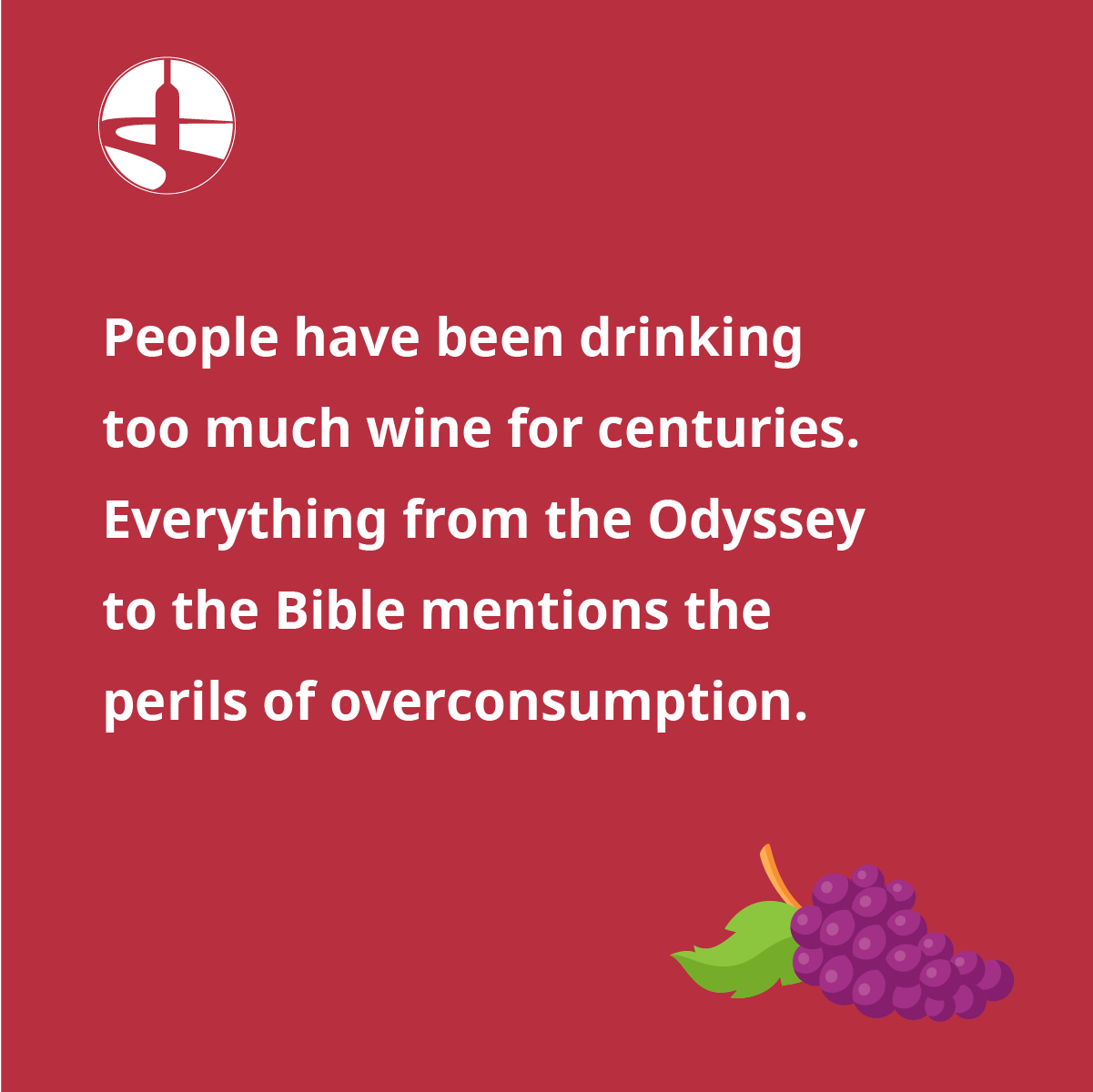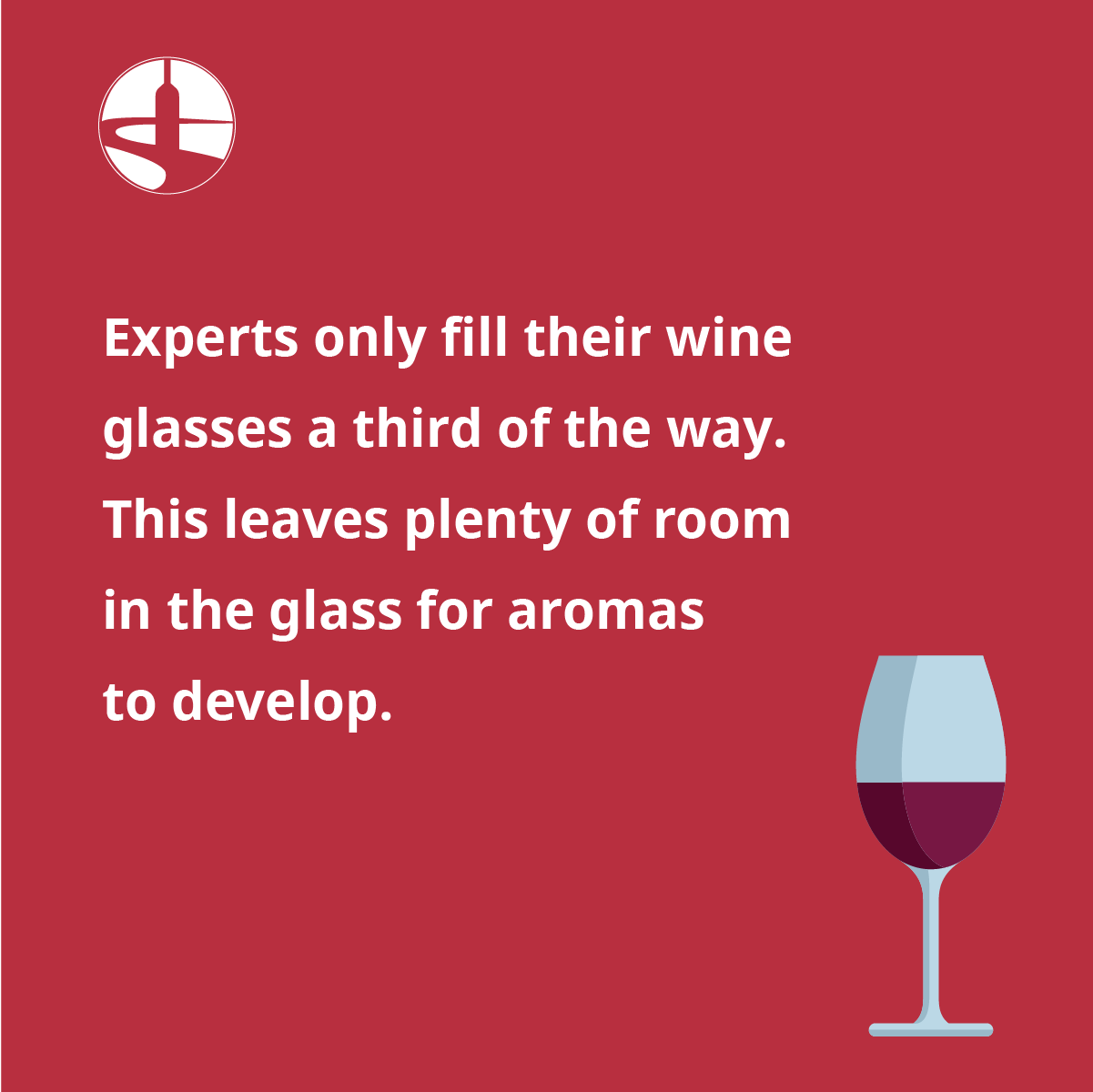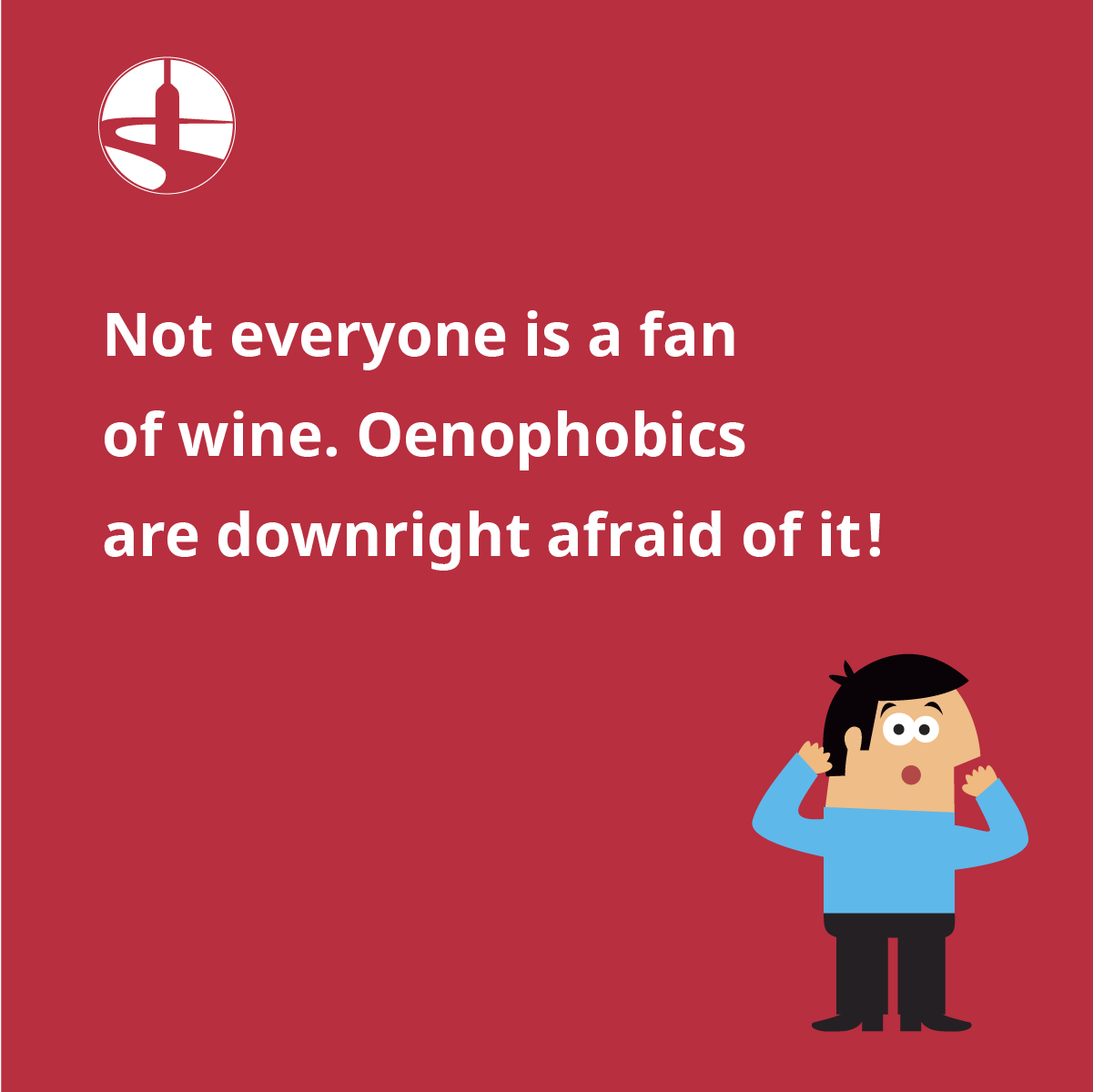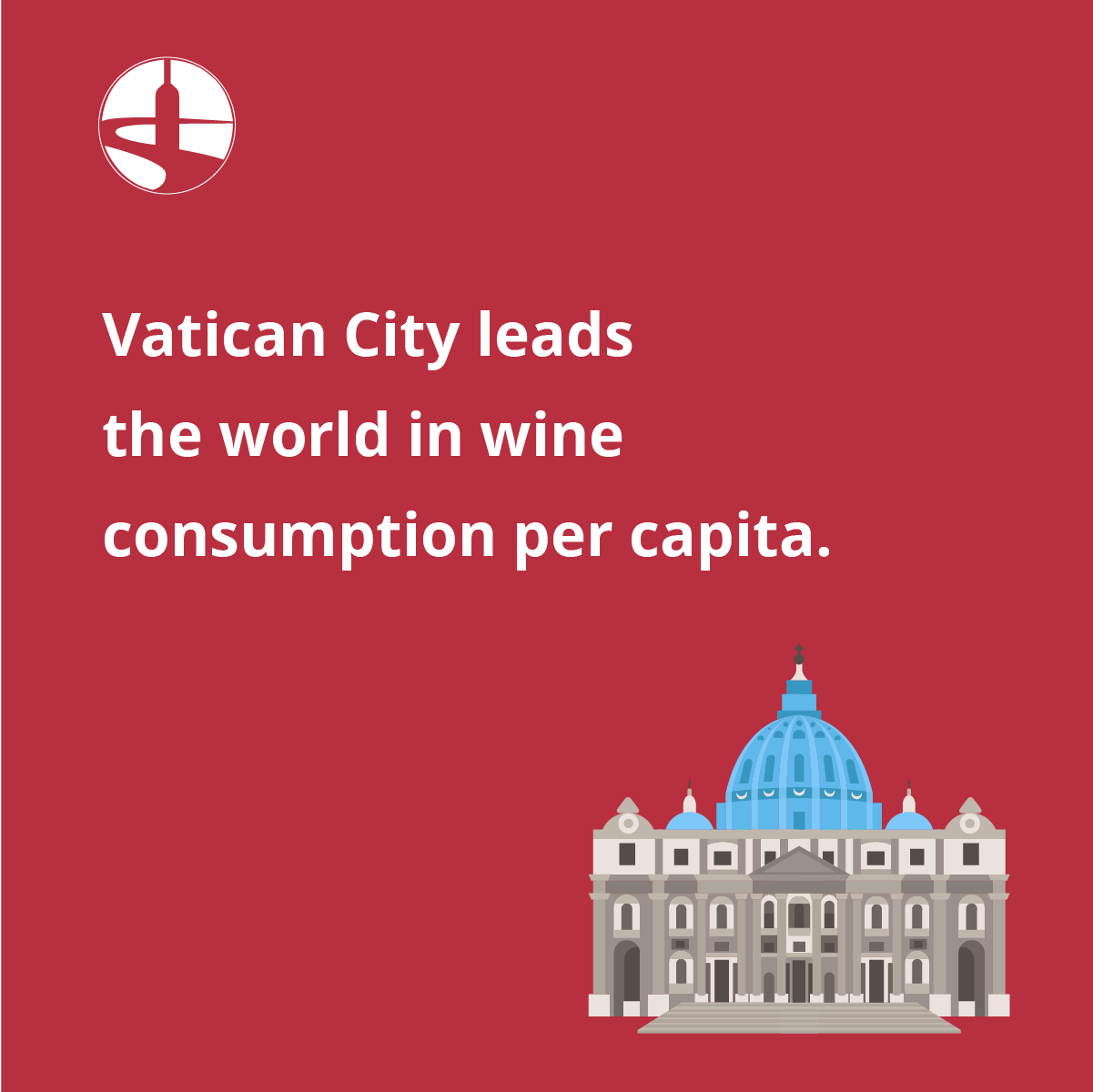Wine is an incredibly nuanced subject for an alcoholic fruit drink. It can take a lifetime to master, people all over the world dutifully dedicate their lives to learning its many secrets. There is just so much to learn – as proven in our gigantic list of wine facts.
Whether you’re just scratching the surface or know a thing or two, we’re hoping that our collection of essential wine facts will be your base camp to wine’s Everest.
History
1. The oldest winery that we know of is Armenian, dated to 4100 BCE.
2. The Phoenicians spread wine around the Mediterranean in the tenth century BCE, introducing the drink to the ancient Greeks, who in turn inspired the Romans to become wine fanatics and grow grapes across their empire.
3. The Greeks and Romans took their wine seriously, dedicating gods to their favourite fermented fruit juice. Dionysus was known as the god of the grape-harvest to the Greeks, while Bacchus was the deity of choice for Roman oenophiles.
4. People have been drinking too much wine for centuries. Everything from the Odyssey to the Bible mentions the perils of overconsumption.
5. Thomas Jefferson may be responsible for the California wine boom. After being sent to France, Jefferson brought vine cuttings back to the United States.
6. 2017 saw a drop in global wine production to a level not seen in sixty years thanks to poor weather conditions.
Types of Wine
7. There are three major types of wine: red, white and rosé. However, there are different, less popular varieties, including orange and even blue.
8. The colour of a wine is determined by the contact that the grape juice has with grape skins – this also impacts the levels of tannins (see fact 44) in the finished product.
9. Red wine can only be made from blue or purple-skinned grapes. White wine can also come from these darker grapes, but only if the juice is separated from the skins.
10. Rosé, which finds itself somewhere in between red and white, is most often crafted by allowing the juice limited and controlled contact with dark grape skins.
11. Sweet or ‘dessert’ wine is made from grapes with high sugar content. In some parts of the world, this means allowing vines to contract a fungal infection called botrytis or ‘Noble Rot’, in others it means allowing grapes to freeze over before they are picked to create syrupy ‘ice wine’.
12. Fortified wines (like sherry and port) are made by adding extra alcohol at different stages of the production process.
13. Because grapes produce sugars as they ripen, wines from warmer climates will generally contain more sugar and are stronger than those from cooler regions, which tend towards acidity instead.
14. The yeast used for fermentation is called saccharomyces cerevisiae, or ‘brewer’s yeast’.
15. Wines from western Europe and the Middle East are known as ‘Old World’, while others are called ‘New World’, which encapsulates the Americas, Australasia, Africa and Asia.
16. European wines often feature the location of production on their labels, while New World wines tend to provide the grape variety instead.
17. The terroir of a wine is a combination of the environmental influences on the grapevine, including soil type and climate.
18. White wines occasionally have harmless, diamond-like sediment called ‘tartrate crystals’ that are formed when the wine has been stored in the cold.

Winemaking facts
19. Wines don’t have to be made from a single grape variety. Different juices are fermented separately and then combined in what’s known as a ‘blend’.
20. Sparkling white wine can be made anywhere, but only those grown and bottled in France’s Champagne region can call themselves champagnes. Alternatives include cava, prosecco and even sparkling Riesling!
21. Champagne bottles are made from thicker glass to resist the pressure created by carbonation.
22. Champagne gets its bubbles in the bottle. Wine is still when it’s bottled, but yeast and sugar are added to the mix which create the carbon dioxide as they interact over at least 15 months.
23. Organic, biodynamic and natural wines are produced by winemakers that avoid intervening in vineyard ecology, opting not to use herbicides and pesticides.
24. If you see a label marked ‘Demeter’, this means that the wine has been certified as biodynamic.
25. Vines are often grafted onto existing roots before being planted in order to protect them from pests, namely Phylloxera.
26. A ‘vintage’ wine is one made only with grapes harvested in the same year. ‘Non-vintage’ wines are blends of several years’ grapes. Many of the largest names in champagne produce non-vintage bottles.
27. If a label says ‘Mis en Bouteille au Domaine’, the wine was bottled at the estate where the grapes were grown. Some argue that this preserves freshness and fruitiness.
28. There are usually 12 bottles in a case of wine.
29. There are 11 bottle sizes, from the 187ml ‘split’ to the Nebuchadnezzar, which holds the equivalent of 20 standard bottles.
30. A ‘magnum’ bottle of wine is the equivalent of two standard bottles, and some claim that it is the optimal size for aging thanks to the reduced space for oxygen.
Grape varieties
31. There are around 1,300 varieties of grape that are used to produce wine.
32. Grapes contain damascenone, a smell compound that contributes floral notes to many wines.
33. The majority of grapevines used for winemaking are variants of the Vitis Vinifera species.
34. The most widely planted variety in the world is Cabernet Sauvignon, closely followed by Merlot, Airén (a Spanish sherry grape), Tempranillo and Chardonnay.
Key varieties
Master of Wine Andrea Robinson identifies six wine grapes that you should know when starting out. They are:
35. Pinot Noir. Known as ‘the classic grape of red burgundy’, it makes for wines with strong berry flavours.
36. Cabernet Sauvignon/Merlot. The spicy, musky Cabernet Sauvignon is responsible for some of the most famous red wine in the world, while Merlot (its neighbour in Bordeaux) is described as ‘softer and fruitier’ by Jancis Robinson.
37. Syrah/Shiraz. Famous for its rich, sometimes chocolatey flavour, Syrah is Australia’s most important wine grape.
38. Riesling. A white grape grown in Germany and the French region of Alsace, Riesling is becoming more and more popular for its ability to age and its versatility.
39. Sauvignon Blanc. New Zealand’s wine industry depends on Sauvignon Blanc, but it is also a favourite of viticulturalists in the Loire Valley and Bordeaux. Its zesty, grassy flavour makes it one of the most popular white wine varieties in the world.
40. Chardonnay. Chardonnay is, according to Jancis Robinson, ‘grown virtually everywhere wine is produced.’ As a result, its flavours vary significantly from strong, chalky minerality in Chablis to buttery caramel in warmer climates. It is often ‘oaked’ in barrels or with wood chips, which has become something of a controversy in the wine world.
Tasting and Serving
41. A 75cl bottle contains about six glasses worth of wine, or 12 smaller glasses for tastings.
42. Many wines aren’t vegan or vegetarian. A fining agent like egg or fish bladder is used to soften astringency from tannins and remove sediment.
43. Malolatic fermentation occurs during the winemaking process, converting sharp malic acid into softer, more palatable lactic acid.
44. Tannins are the substance in red wine that give it a bitter, sometimes astringent feel in the mouth. They are transferred to the grape juice when it comes into contact with the skins and seeds early in the winemaking process.
45. Younger red wines are generally more tannic than their older counterparts. As red wines age, they also become lighter in colour.
46. As a general rule, white wines should be served from five to twelve degrees celsius depending on their characteristics, while reds should be between ten and eighteen degrees. Jancis Robinson’s helpful temperature guide goes into further detail.
47. Experts only fill their wine glasses a third of the way. This leaves plenty of room in the glass for aromas to develop.
48. ‘Swirling’ a wine glass before tasting aerates the wine and helps to release its aromas.
49. Wine glasses are tulip-shaped, curving inwards at the top so that aromas aren’t able to escape.
50. There’s a widely accepted tasting process. Start by looking at the colour, then smell before you taste.
51. Decanting red wine before serving can mimic the ageing process, allowing oxygen to flood into the liquid and develop its flavour.
52. Oak imparts buttery vanilla flavours to a wine when it is aged in barrels.
53. When chilling a wine, adding water to an ice bucket increases the surface area contact between a bottle and the cold, bringing the temperature down faster.
54. There are four tasting elements to look for when sampling wine: acidity, sweetness, tannins and alcohol content.
55. Moving the wine around in your mouth when tasting allows all of your taste receptors to fire. Sweetness is detected at the tip of the tongue, bitterness at the back and sourness on the sides.
56. Matching a wine’s characteristics to the dominant flavours and ‘body’ of a meal can elevate a wine’s flavour and balance its elements.
Storage
57. The majority of wine isn’t made to be aged. Experts Jancis Robinson and Kevin Zraly both say that only around ten percent of bottles benefit from aging. Most should be enjoyed within five years.
58. Storing wine bottles horizontally is best. It keeps the cork damp and prevents too much air from entering the bottle.
59. A wine is ‘corked’ when it smells and tastes slightly mouldy, or like wet cardboard. If it’s obviously tainted, it is acceptable to ask for something else to replace it. It should be noted that screw caps and artificial corks don’t have this issue.
60. Screw Caps were popularised by Australian and New Zealand winemakers, who were not satisfied with the quality of the corks they were being given.
61. Wines sealed by cork still make up the majority of bottles in the world at 64 percent.
62. Storing wine away from direct light and heat preserves its freshness.
Wine facts and trivia
63. A 75cl bottle of wine contains the juice of 600 to 800 grapes.
64. Biodynamic winemakers are notorious for their unusual practices, which involve planning harvests around planetary movement and burying cow horns full of manure to create supercharged fertilizer.
65. The tannins in red wine are antioxidants. A glass of red with dinner every night has been shown to reduce the risk of heart disease by managing healthy cholesterol levels.
66. The practice of adding sugar for an alcohol boost to wines in cooler regions is called ‘chaptalisation’. It takes its name from Jean-Antoine Chaptal, a minister serving under Napoleon.
67. Not everyone is a fan of wine. Oenophobics are downright afraid of it!
68. Romans mixed lead with their wine, using it as a sweetener. Some historians credit lead poisoning for the fall of the Roman Empire.
69. White wine sales in the UK overtook red in 2016, with rosé coming in a distant third.
70. The infamous ‘Judgement of Paris’ of 1976 is an event worth knowing. Californian wines beat out French bottles in a blind tasting, creating controversy and validating American wine on the world stage.
71. Wine has no fat or cholesterol – a guilt-free treat!
72. Most corks originate from Portugal’s many cork forests, though they have dropped in popularity with the arrival of screw caps and synthetic corks.
73. Vatican City leads the world in wine consumption per capita.
74. If you’re eating artichokes, avoid pricey wine. They can make most wines taste tinny or too sweet.
75. Champagne bottles contain more pressure than the tires of a car.
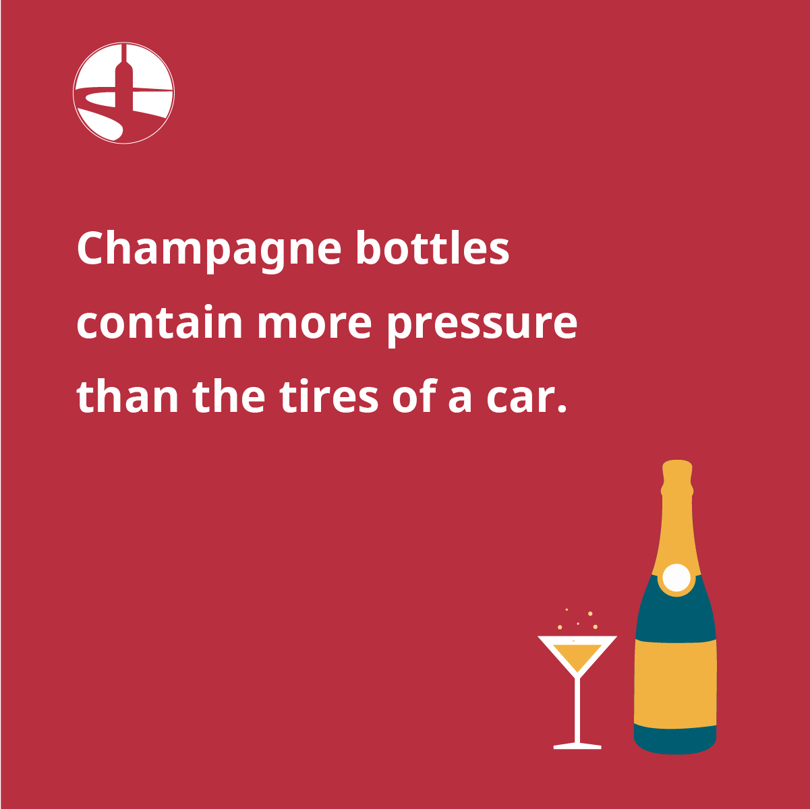
Wine Dictionary
76. Aeration: the infusion of oxygen into a wine in order to develop and balance its elements.
77. Appellation: on French wine labels, the legally defined region from which the wine originates.
78. Astringent: the bitter, drying character of a wine with lots of tannin.
79. Blend: a wine made from more than one grape variety.
80. Body: the feel of a wine in your mouth, relating to weight and ‘fullness’.
81. Bouquet: the more nuanced aroma combinations detected in aged wines.
82. Bung/bung hole: not what you think! The bung seals the bung hole, which is an opening in wine barrels used to add or remove wine.
83. Brix: the measurement of a grape’s sugar content when harvested.
84. Claret: red wines from Bordeaux.
85. Cuvée: you’ll see this on champagne bottles. It means the wine is a blend.
86. Cooked: a wine that has been subjected to heat damage in storage.
87. Dry: a flavour descriptor that refers to the effects of tannin on the palate in red wines, and a lack of sweetness in whites.
88. Fining: the process of removing sediment from a wine with a fining agent.
89. Fining agent: the material used to clarify a wine. Fish bladder, egg whites and clay are all examples of fining agents.
90. Finish: the aftertaste of a wine.
91. Lees: natural sediment that gathers during the fermentation process.
92. Must: the juice that is gathered from wine grapes.
93. Nose: the smell of a wine.
94. Oenology: the study of wine.
95. Oxidation: the process that occurs when wine is exposed to air.
96. Plonk: bad-quality wine. To be avoided at all costs!
97. Sommelier: a wine expert, usually with a certification.
98. Terroir: the unique character of a vine’s surroundings, encapsulating climate, soil and topography.
99. Vitis vinifera: the species of grapevine from which wine is made.
100. Vintage: the year a wine’s grapes were picked.
So there it is. Armed with these facts, you should be able to hold your own at tastings and begin to delve into areas of specific interest. No matter how complicated it gets, just remember Euripides’ wise words:
“Where there is no wine, there is no love.”


